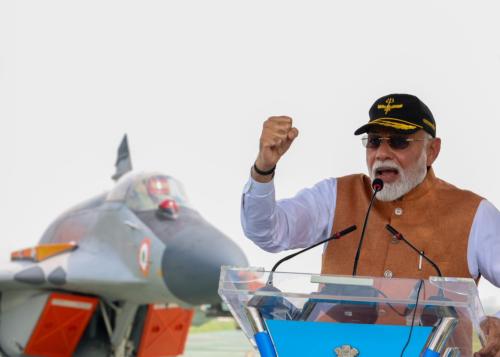It is hard to measure the real impact that the audiovisual strategy of ISIS on social media has in the radicalization process of a terrorist. It would be simplistic to conclude that the terrorists of Paris committed the attack because they watched ISIS videos on the internet. But at the same time, there are significant grounds to suspect that the ISIS audiovisual communication through social networks might be linked with the terrorist attacks.
The country that has received the most threats by ISIS via videos broadcasted on social media is Russia, with more than 25 in two years. France follows, with almost 20 in the same timeframe. During the last two weeks, events have shown that threats to those countries were not only digital, but also real.
On October 31, fourteen days before the attacks in Paris, ISIS released a video encouraging young people in France to join the terrorist group. Something similar happened on June 26, when a terrorist inspired by ISIS committed a terrorist attack in Lyon. One month earlier, ISIS had released a video on social media encouraging young French citizens to commit terrorist attacks. Finally, one month before the January 7 attack on the offices of Charlie Hebdo, ISIS released a video where a group of young French citizens asked their peers to enlist in the ranks of terrorist group.
Given these facts, it is more important than ever to analyze and understand the role of audiovisual communication in the radicalization of terrorists and to define an efficient way to counter it.
Using local perspectives to counter ISIS
For the last two years, the most relevant academic, governmental, and multilateral institutions have been working to counter the sophisticated digital communication strategy developed by ISIS since 2014. During that time, the Department of State has published more than 300 videos on YouTube that counter the violent and extremist messages of radical jihadist groups in social media. The most widely viewed video from the Department of State was released in July 2014 and has nearly 120,000 views.
On October 22, one U.S. Delta Force soldier was killed during a raid to free 70 Kurdish prisoners held by ISIS in Iraq. This military operation saved the lives of the 70 prisoners. At the same time, the raid provided valuable material, resources, and knowledge to develop a more effective strategy to defeat ISIS not only in the battleground, but also in social media and in the public opinion sphere.
The whole rescue operation was filmed through the helmet camera of one of the Kurdish soldiers who also took part in the operation. The footage was leaked to the Kurdish media network “Rudaw” two days after the operation on October 24, and that video quickly became a viral phenomenon in social media, with more than 1.2 million views in only five days. This was ten times more views than the most popular video released by the Department of State received in over a year.
The video showing the images of the rescue contains key elements for becoming viral in social media: a short length (4 minutes), shocking images, cultural resonance from action films like Zero Dark Thirty, and a real, emotional story.
The success of the campaign was promoted through six different Twitter accounts specializing in countering ISIS in social media. These accounts have released video of the U.S. raid against ISIS on Twitter, adding the Arabic hashtags used by ISIS in their communications. According to data provided by the Twitter analysis software Tweetbinder, the six Twitter accounts published 843 tweets in one week with the Kurdish prisoner video, reaching an audience of 711,313 Twitter users.
This campaign has been strengthened through the publication of a separate ten-minute video with the real testimonies in Arabic of the 70 rescued Kurds. Their voices are extremely powerful because this is the first time that Arabs and Muslims express in public the atrocities of ISIS and their gratefulness to United States Army.
Digital communications strategies
The success of this Kurdish social media campaign demonstrates once more that in this digitally-mediated world, not only is news important, but also how it is communicated. This includes the channels it is distributed in order to engage effectively with target audiences. Digital communication itself is a central strategy for countering terrorism, and any future military, political, or intelligence operation should take this into consideration.
The raid in Iraq revealed four important lessons for the U.S. and other allied countries to effectively counter ISIS’s digital communication strategy:
- Military operations against terrorism should be accompanied by a digital communication strategy that provides audiovisual material to be shared on social medial.
- Counter-narrative campaigns against ISIS should be based on true stories of Arabs and Muslims who have experienced firsthand experience the suffering caused by ISIS.
- ISIS counter-narrative campaigns obtain more engagement and more views when they are distributed through non-government channels.
- Videos and images containing real action images of counter-terrorism operations are in high demand.
For the first time, ISIS has suffered a defeat in social media. This is a valuable start that suggests the growing importance of communication and social media in the strategy to defeat terror.
The Brookings Institution is committed to quality, independence, and impact.
We are supported by a diverse array of funders. In line with our values and policies, each Brookings publication represents the sole views of its author(s).




Commentary
Fight against ISIS reveals power of social media
November 19, 2015